The Paint Horse, also known as the American Paint Horse, is a breed of domestic horse. People originally bred this now-worldwide species in North America. Scientists classify all domestic horses in the species Equus caballus. Other members of the genus include several species of zebras, wild horse species, and donkeys. Read on to learn about the Paint Horse.
Description of the Paint Horse
This breed of horse has a solid build that is not too stocky nor too lean. Their primary characteristic is their multi-colored coats. Their coats come in a variety of colors and patterns, including tobiano, overo, tovero, and more.
Members of this breed typically stand between 14 and 16 hands tall from the shoulder (or withers) to the ground. This translates to roughly 56 to 64 in. tall at the shoulder.
Interesting Facts About the Paint Horse
Though their coloration makes up a large portion of the standards of this breed, individuals can have drastically different patterns. Learn more about the main coloration types, below.
- Tobiano – Horses with this color pattern typically have white legs and rounded edges on the contrasting colors on their coats. Their coats also typically contain more white coloration than dark coloration. This pattern is the most common.
- Overo – This coloration is the opposite of tobiano. Dark coloration predominates over white markings, and the edges of the contrasting colors have irregular, sharp patterns. Horses with this color pattern also generally have white faces and blue eyes.
- Tovero – Just as the name is a mixture between the two, tovero colorations share a mixture of traits for tobiano and overo colorations.
Habitat of the Paint Horse
Because this breed came from other domestic horse breeds, it did not have a natural “habitat.” Instead, people kept and raised this horse in human-controlled habitats such as farms.
Farmers kept this horse on grasslands, meadows, fields, pastures, and similar habitats. Nowadays, they primarily utilize areas with plenty of space and grass for the horses to roam and graze.
Distribution of the Paint Horse
This horse originated in North America. People bred this variety from existing horse breeds. Their unique coloration helped the breed spread across the country and eventually across the globe. You can now find this breed virtually worldwide, with the exception of some isolated regions.
Diet of the Paint Horse
Like all horses, this breed has herbivorous feeding habits. This means it eats plants, and does not eat other animals. They feed primarily upon grasses. However, people supplement domestic horses with grains as well. Their diet includes barley, soybeans, alfalfa, oats, timothy hay, corn, flax, wheat, clover, and more.
Paint Horse and Human Interaction
This breed would not exist without human interaction. People bred this horse for its unique coat color, but have used it for a variety of purposes. They most commonly use these horses for trail riding and other light pursuits. Some people utilize this breed for show in hunting or jumping contests.
Domestication
People developed this breed from the American Quarter Horse and the Thoroughbred. They share a similar body type with quarter horses, but have differing color patterns. The American Paint Horse Association formed when the American Quarter Horse Association began to exclude those horses with contrasting coloration in favor of solid colors.
Does the Paint Horse Make a Good Pet
Yes, this breed can make a good pet. However, with any horse breed you should fully understand the commitment you undertake. Their feeding, sheltering, and medical care can be quite expensive and time consuming.
Paint Horse Care
Just like any other breed, these horses have a social nature and do best in a group, known as a herd. They need large pastures with plenty of grass to eat, and you should also supplement their diet with grain and hay as well, particularly in areas with little grass. Additionally, you must provide access to fresh water at all times, and shelter of some form.
Behavior of the Paint Horse
This breed has a similar disposition to that of the quarter horse. This means that, like the quarter horse, this breed has a friendly disposition, and looks to please. Quite intelligent, this horse also does well in competitions because it’s easy to train.
Reproduction of the Paint Horse
This breed has the same reproductive rates as any other breed of horse. The male, known as a stallion, can breed with multiple females, known as mares. After mating, the mares undergo a gestation period of approximately 11 months, though this ranges slightly.
For the vast majority of births, mares give birth to a single offspring, known as a foal. People wean domestic horses between four and six months of age.

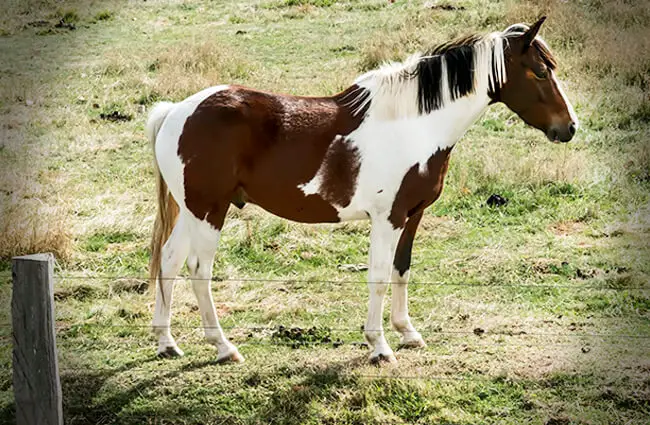

![Portrait of a stunning Paint Horse in the show ring Portrait of a stunning Paint Horse in the show ring Photo by: Marie Kuiper [public domain] https://creativecommons.org/licenses/by-sa/2.0/](https://animals.net/wp-content/uploads/2020/03/Paint-Horse-6-650x425.jpg)
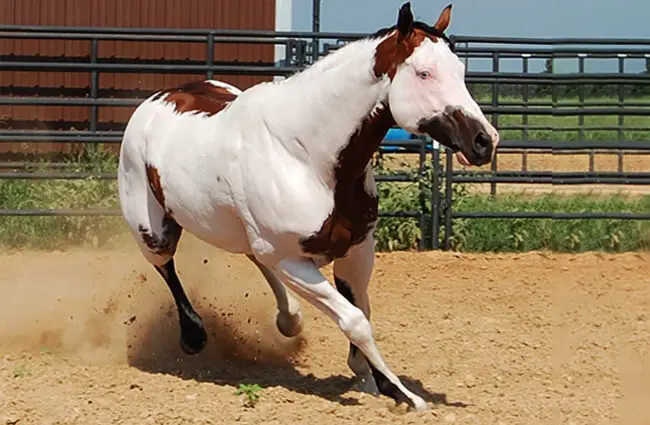

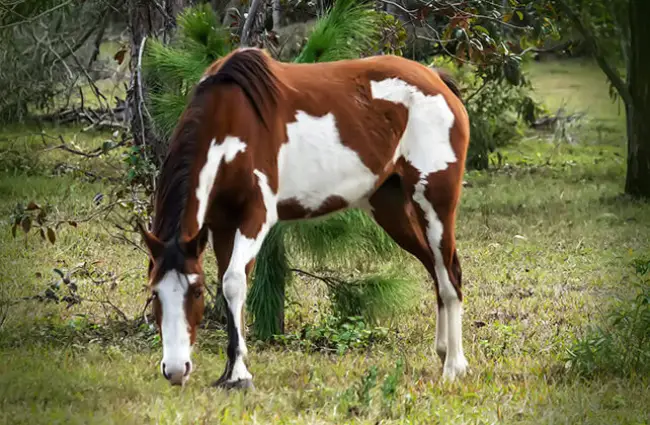
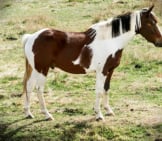
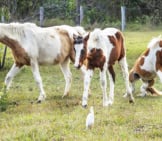
![Portrait of a stunning Paint Horse in the show ring Portrait Of A Stunning Paint Horse In The Show Ring Photo By: Marie Kuiper [Public Domain] Https://Creativecommons.org/Licenses/By-Sa/2.0/](https://animals.net/wp-content/uploads/2020/03/Paint-Horse-6-162x141.jpg)



![Red Angus Closeup of a beautiful Red Angus cowPhoto by: U.S. Department of Agriculture [pubic domain]https://creativecommons.org/licenses/by/2.0/](https://animals.net/wp-content/uploads/2020/03/Red-Angus-4-238x178.jpg)

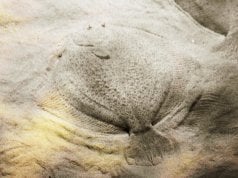










![Red Angus Closeup of a beautiful Red Angus cowPhoto by: U.S. Department of Agriculture [pubic domain]https://creativecommons.org/licenses/by/2.0/](https://animals.net/wp-content/uploads/2020/03/Red-Angus-4-100x75.jpg)

